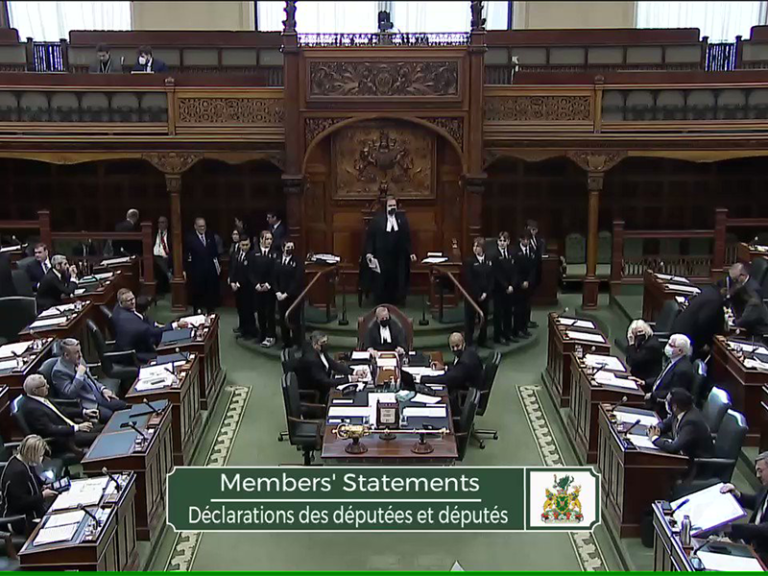First published: July 29, 2004
Plans by the local Catholic and public school boards to create a joint body to combine and oversee transportation sounds like a good idea – at least, on the surface it does.
The Kawartha Pine Ridge District School Board and the Peterborough Victoria, Northumberland and Clarington Catholic District School Board approved the idea last week. Still in its infancy, the proposal will see the amalgamation of the existing transportation departments of the two boards over the coming months. There will be no job losses among existing transportation staff on the two boards, the administrators promise.
Public school board chairperson Angela Lloyd said the idea is to reduce the cost per student while maintaining and improving services to bused students.
“The ultimate goal is to ensure that transportation services are as efficient and effective as possible,” said Dr. Avis Glaze, director of education for the public board in a press release.
This is good news for budget hawks, who like to save money at every step. The two boards spend $21 million on student busing.
But there is a cautionary tale inside this story for parents. And it should be of great concern, so much so that parent councils and those with children using the bus system should be on top of the changes starting this fall. Even though the board promises to bring its recommendations to the public in the spring of 2005, by then it may be too late.
Parents only need to look next door at the Hastings Prince Edward District School Board and the overall haul of its bus system. The results left parents fuming and children out of sorts.
Hastings joined with the Algonquin Lakeshore Catholic District School board to review its busing system. It is one of the largest consortiums. It handles 38,000 students for 164 schools, traveling about 97,000 kilometres. Its annual budget is $30 million.
When the consortium looked at gaining greater efficiency and cost effectiveness, it studied various types of software programs for a solution under pressure from the Ministry of Education. It decided it was not good enough to optimize buses doing the same route. Instead, it chose to stagger bell times, starting high school students at 8 a.m. and elementary students an hour later.
The effects of staggered bell times means buses go out and brings in secondary students and then go back out to get the elementary students. In its report to trustees and the public, it acknowledges the negative impact on students, parents, staff and bus companies.
But that didn’t stop anyone.
In Ontario, 55 of 72 school boards have adopted staggered bell times.
Across the province parents, students and teachers reject the system. At public meetings, parents argued the staggered bell times made it very difficult on working parents who were delayed getting to work on time because they had to wait for small children to get on the later buses.
Parents with high school students said the buses ran too early. Those with both elementary and high school students said it caused confusion in the household. It also meant teenagers, who would normally look after younger siblings, were no longer available. There was even concern about sleep deprivation when teenagers were forced to get up early.
These concerns were echoed at public meetings in Chatham, when the Lambton-Kent District School Board made similar proposal this past spring.
Community leaders called on the board to recognize the impact on the community at large, saying businesses would be affected, as employees would have trouble getting to work on time. There were also similar arguments about before and after school care. It was noted the financial burden this placed on families.
There is no way local school boards can ignore the financial crisis created by the province when it comes to busing. The Rozanski Report, released in 2003, called for improved funding. Ironically, funds for buses in Ontario was $654 million in 1991, but in the 2004 budget it dropped to $651 million. The Ontario School Bus Association, a lobby group for bus operators, calls for $691 million to meet current demand
The report notes the cost of new buses has gone up 32 per cent. And costs for licensing, inspection and insurance, as well as fuel costs have all skyrocketed. Local boards have little choice.
The idea for a joint transportation plan is admirable. It would be irresponsible of the board to do anything less. In fact, it should have happened many years ago. (It was discussed previously, but was never fully realized).
However, parents, teachers and students must be involved in the process much earlier than proposed. It does not bode well when the board makes the decision in a closed-door session, away from public view. This must be done in transparent fashion. It would behoove the boards to consult first with parents to see what concerns they have and then draft a plan.
The mistakes of Hastings must not happen here.
While board officials may declare they only wish to be more efficient, if they go too far, it will be families across Northumberland County who will ultimately pay the price.


